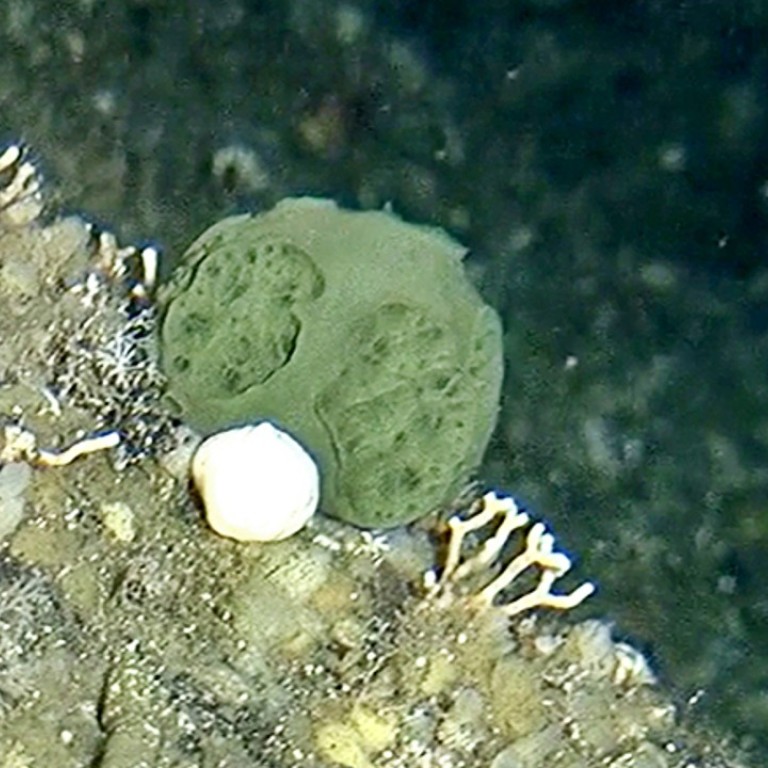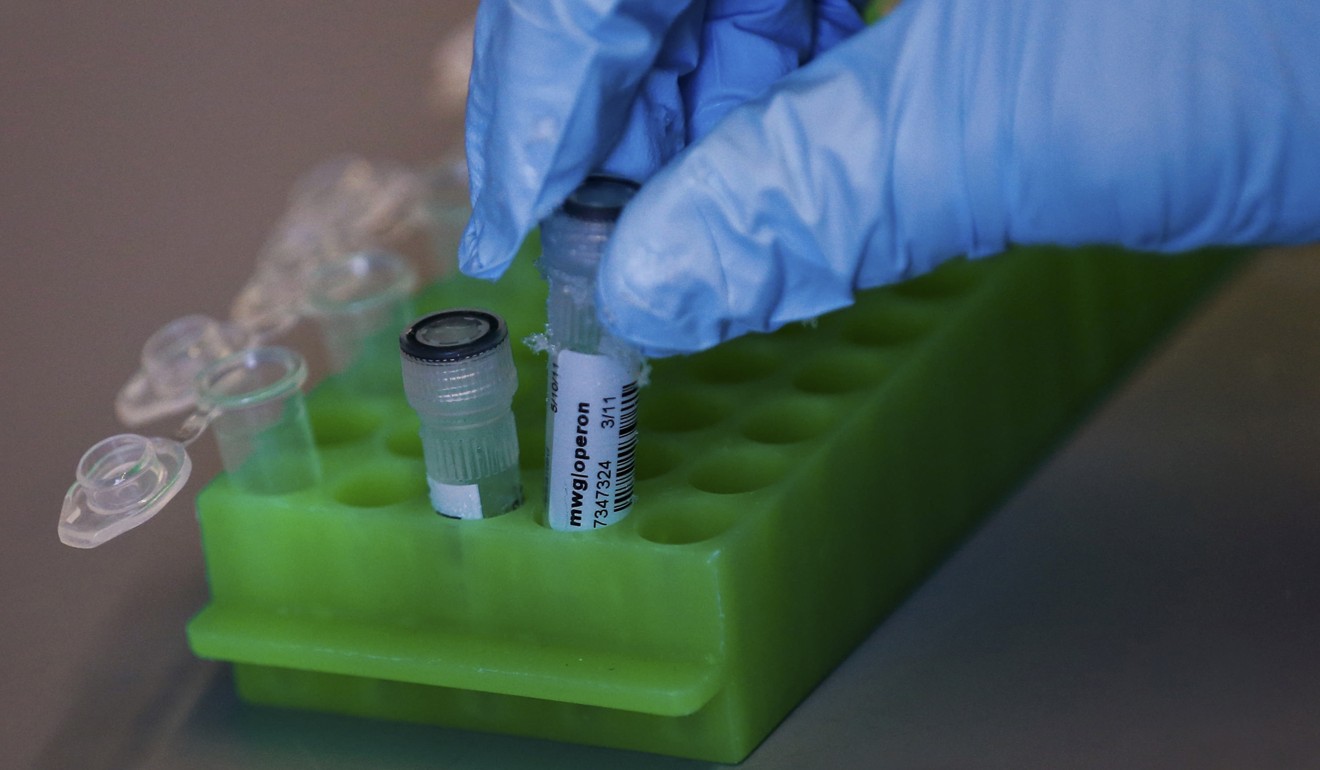
Sea sponge may hold key to pancreatic cancer treatment, researchers say
In other health news, a quarter of women experience symptoms other than hot flushes in the lead-up to the menopausal transition, and a muscular dystrophy gene editing trial on dogs paves the way for humans to try it
A small sponge discovered in dark, icy waters of the Pacific Ocean off the US state of Alaska could be the first effective weapon against pancreatic cancer, researchers say. Pancreatic cancer tumours are particularly aggressive and notoriously difficult to treat.
“One would never have imagined looking at this sponge that it could be miraculous,” says Bob Stone, a researcher at the Alaska Fisheries Science Centre.
Blood test may help find early-stage pancreatic cancer, one of the deadliest forms of the disease and often diagnosed too late
Stone discovered the green sponge, called Latrunculia austini, in 2005 while on an expedition to explore the seabed off Alaska. It lives on rocks in patches at depths of 70 to 220 metres. Lab testing has shown that several molecules in this sponge selectively destroy pancreatic cancer cells, says Mark Hamann, a researcher from the University of South Carolina.

“This is undoubtedly the most active molecule against pancreatic cancer that we see,” Hamann says. “Although there is still much work to be done, it marks the first key step in the discovery and process of developing a treatment.”
This is undoubtedly the most active molecule against pancreatic cancer that we see
Pancreatic cancer progresses slowly, a circumstance which leaves patients in a tough position as late diagnosis means little chance for successful treatment. Patients’ chances of survival at the five year mark for this tumour are only 14 per cent, according to the American Cancer Society.
“I’ve looked at 5,000 sponge extracts over the last two decades,” Valeriote says. “In terms of this particular pattern of pancreatic and ovarian cancer selective activity, we’ve only seen one [other] sponge with such activity, and that was one collected many years ago in Indonesia.” AFP

Premenopausal symptoms extend beyond hot flushes
Although considerable attention is paid to the problem of hot flushes, one quarter of women (in their forties and early fifties) experience a range of moderate to severe physical and psychological symptoms in the lead-up to the menopausal transition, research has found. The study, published in the journal Women’s Midlife Health, found that addressing these symptoms early is critical to reducing the risk of a woman developing chronic disease and disability.
The way in which some symptoms cluster together may suggest underlying mechanisms, such as inflammation, that put women at risk of disability and chronic disease
Harlow says women’s health needs and concerns “extend far beyond menopausal hot flushes”. “Increased attention to the promotion of physical and mental health in early midlife – in the early to mid forties – is needed,” she says.
Time to bone up: Hong Kong study finds majority of local menopausal women have weak bone density
“The way in which some symptoms cluster together may suggest underlying mechanisms, such as inflammation, that put women at risk of disability and chronic disease. It is thus important that the health care community pays attention to the health needs of the one quarter of women who are already highly symptomatic prior to the menopausal transition.”
EurekaAlert.com

Muscular dystrophy gene editing trial helps dogs. Are humans next?
Researchers have used gene editing to reverse symptoms of Duchenne muscular dystrophy (DMD) in dogs. DMD is a muscle-wasting and life-shortening disease that affects one in 5,000 baby boys.
The disease has long been a target for gene therapy and it is only to be hoped that sufficient funds can be awarded for this research to … go into full clinical trials.
The dogs’ symptoms remained in check two years after receiving a single injection, a team reported this week in the journal Nature Communications.
Successful treatment of a large mammal is a crucial step on the road to finding a treatment for human sufferers of DMD. The research team says the results are “paving the way for human clinical trials”.
DMD is caused by genetic mutations that interfere with production of dystrophin, a protein needed for healthy muscles.
The international team developed a new type of gene transfer therapy to restore dystrophin expression in affected dogs. They injected the dogs with microdystrophin – a compressed version of the dystrophin gene, which is one of the largest in the human body with 2.3 million base pairs of coding “letters”. Given its size, it has been impossible to fit the normal dystrophin gene into an emptied virus, which is used to deliver modified genes to patients.
Dogs given the treatment showed “significant restoration of muscle function with a stabilisation of clinical symptoms for more than two years after the injection”, the researchers say.
Disabled students battle against the odds in Hong Kong's pre-university exams
Geneticist Darren Griffin, from the University of Kent in southeast England, says that this was “really a very exciting study”. “The disease has long been a target for gene therapy and it is only to be hoped that sufficient funds can be awarded for this research to reach its natural conclusion and go into full clinical trials,” he says.
Boys affected by DMD develop muscle weakness in their first year of life, and generally become wheelchair-bound before the age of 15. Muscle wasting, breathing and heart problems follow, and patients rarely survive into their forties. AFP
